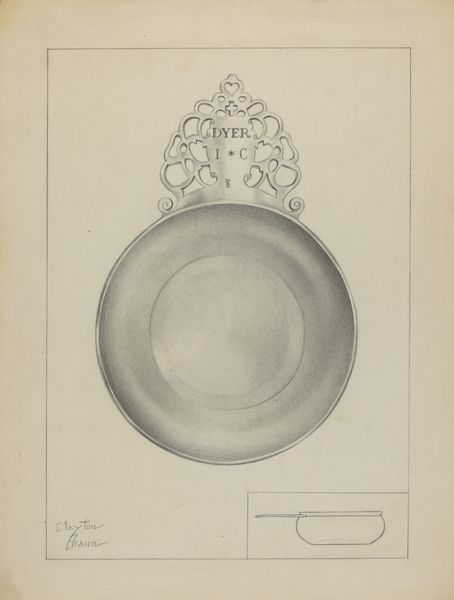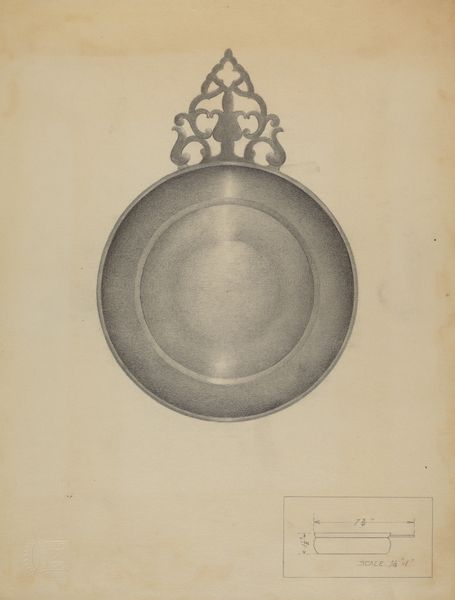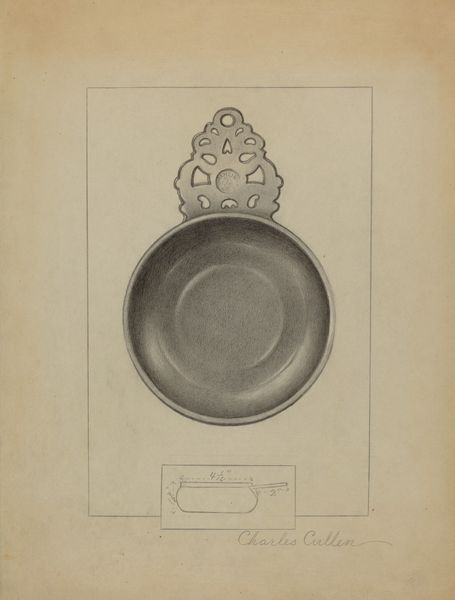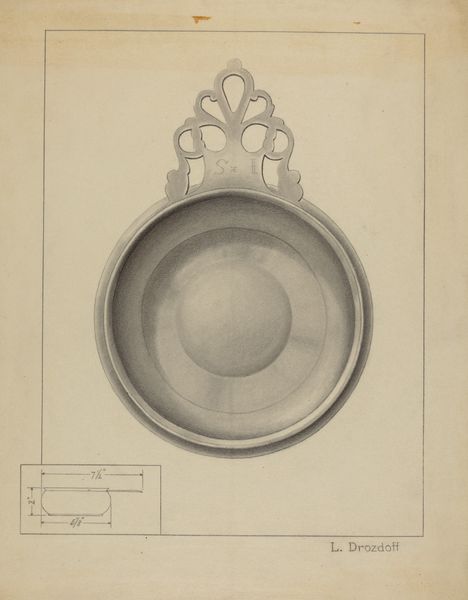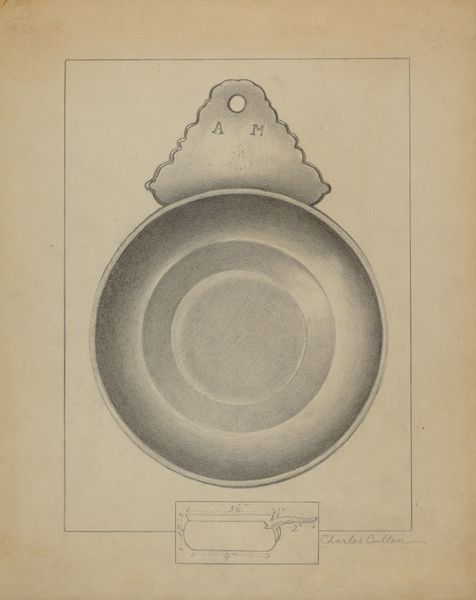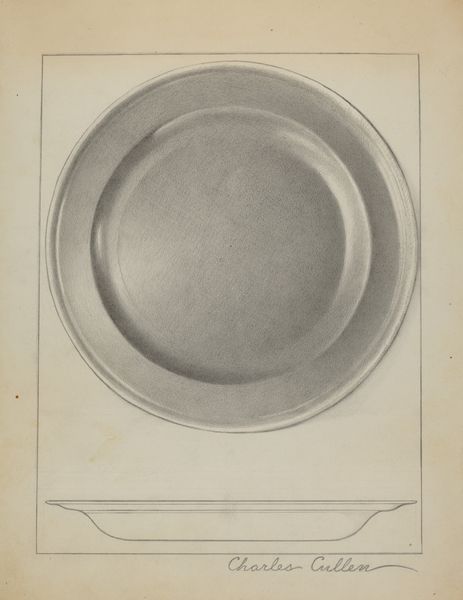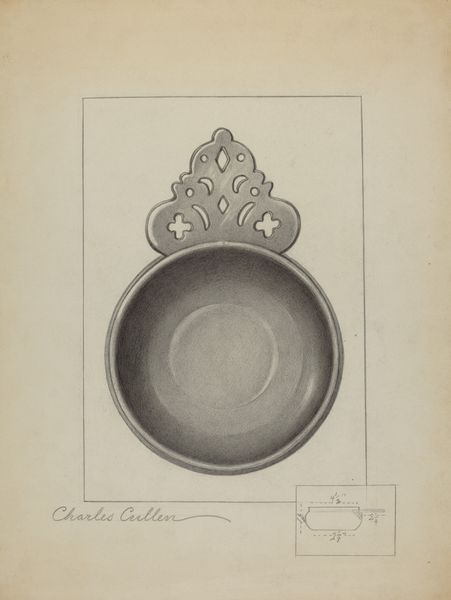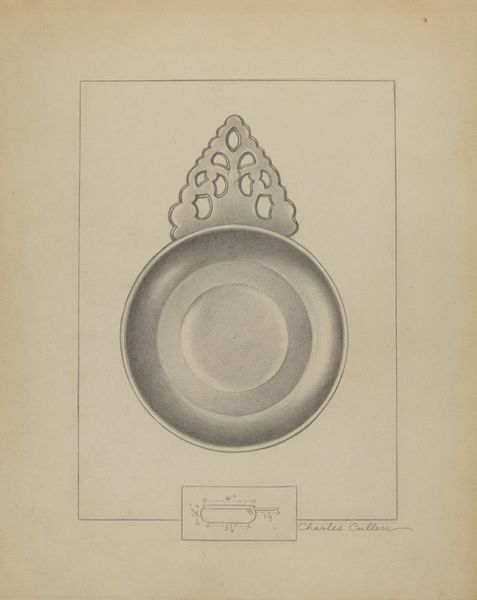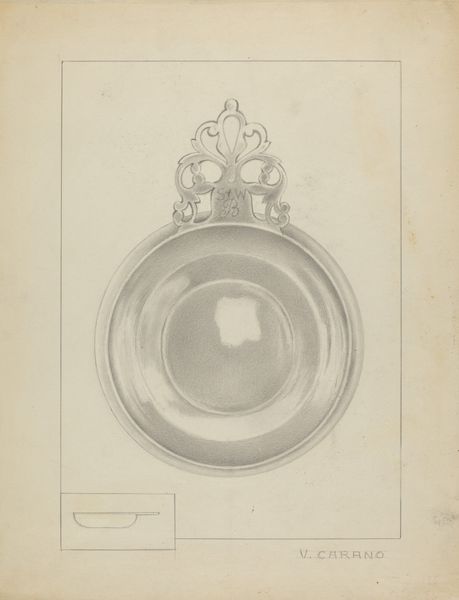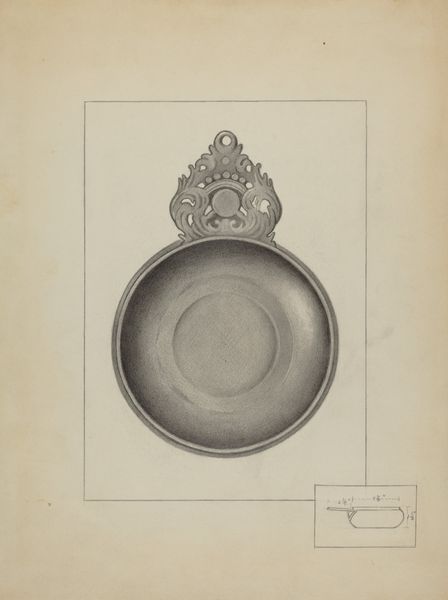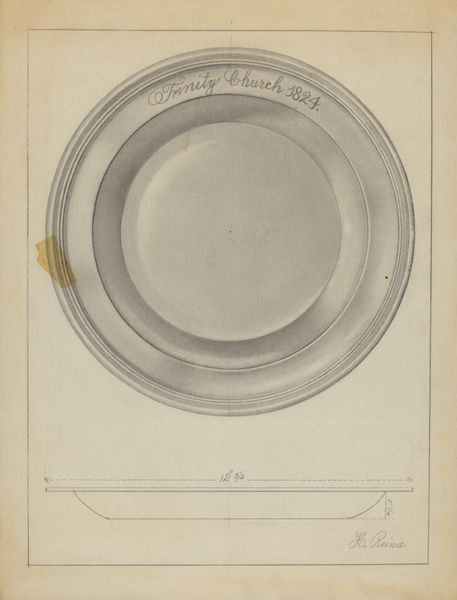
drawing, pencil
#
drawing
#
geometric
#
pencil
#
academic-art
Dimensions: overall: 29.4 x 23 cm (11 9/16 x 9 1/16 in.)
Copyright: National Gallery of Art: CC0 1.0
Curator: Here we have a pencil drawing entitled "Pewter Porringer" by Eugene Barrell, created around 1936. Editor: My first impression is of austerity, almost like a scientific illustration. The grey shades and simple composition really ground it. Curator: I think situating Barrell's work historically helps to challenge that impression. In the 1930s, during the Great Depression, there was a real turn towards representing everyday objects. Artists focused on making art accessible and relevant to the working classes. Something as humble as a porringer, usually associated with children, could symbolize sustenance and resilience. Editor: That’s fascinating, I hadn't considered the social commentary. For me, the porringer’s handle, with its intricate cutouts, also echoes a type of heraldic crest or even crown. Could it also carry symbolic meaning related to power, authority, or lineage? Perhaps reflecting the importance and influence that the past has on the present? Curator: I find your reading about symbolic visual languages highly compelling. Although a rather simple depiction of a basic eating implement at first glance, thinking about this modest object in a variety of contexts reveals the powerful visual metaphors that an artist may communicate. This would not be possible, though, without acknowledging intersectional relations with regards to social-economical, racial or gendered subjects in a moment when there was an urgency to bring together art and society. Editor: It strikes me that it transcends pure utility to enter a realm of ritual and tradition. Visual culture communicates in a language with an almost unspoken authority, its echoes shaping the landscape of what and how we believe. Curator: Absolutely. Bringing together social history and iconographic elements offers deeper comprehension about how objects of daily life communicate ideas beyond mere function, echoing voices and stories through their materiality and representations. Editor: This encounter made me revisit my initial reaction – the drawing, while seemingly simple, contains subtle layers of meaning, both visually and historically. Curator: For me, the piece serves as a powerful reminder of how art can document the past while sparking dialogues that question assumptions about value, representation, and accessibility.
Comments
No comments
Be the first to comment and join the conversation on the ultimate creative platform.

